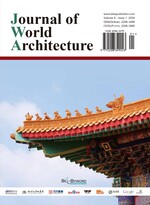Abstract
To overcome the problem of imprecise and unclear information in the development of quality functions, a method for determining the priority of engineering features based on mixed linguistic variables is proposed. First, the evaluation member uses the determined linguistic variable to give the correlation strength evaluation matrix of customer requirements and engineering features. Secondly, the relative importance of the evaluation member and customer requirements are aggregated. Finally, the priority of engineering features is obtained by calculating the deviation. The feasibility and practicability of this method are proven by taking the design of a new product of a long bag low-pressure pulse dust collector as an example.
References
Wang ZQ, Chen ZS, Garg H, et al., 2022, An Integrated Quality-Function-Deployment And Stochastic-Dominance-Based Decision-Making Approach For Prioritizing Product Concept Alternatives. Complex & Intelligent Systems, 8(3): 2541–2556.
Verbichi V, Cojocaru R, Boil LN, 2019, Technical Characteristics of the Equipment for Friction Stir Welding (FSW), Depending on the Base Metals. Advanced Materials Research, 1153: 7–15.
Dong C, Yang Y, Chen Q, et al., 2022, A Complex Network-Based Response Method for Changes in Customer Requirements for Design Processes of Complex Mechanical Products. Expert Systems with Applications, 199: 117124.1–117124.15.
Chen ZS, Yang LL, Chin KS, et al., 2021, Sustainable Building Material Selection: An Integrated Multi-Criteria Large Group Decision Making Framework. Applied Soft Computing, 2021: 113.
Wang Z, Fung RYK, Li YL, et al., 2018, An Integrated Decision-Making Approach for Designing and Selecting Product Concepts Based on QFD and Cumulative Prospect Theory. International Journal of Production Research, 56(5): 2003–2018.
